"We are Indian. We have that in us. We have ties to the land that nobody else has."
Wanda Johnson
Burns Paiute Tribe
In 1851, the first treaty was signed in Oregon between the Indians and the U.S. government. These historical photos offer a small glimpse into the lives of the native Oregonians around the turn of the last century.
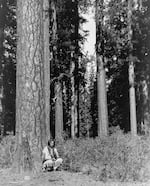
A Klamath Indian rests against a large Ponderosa pine in 1923. White settlers in this area at first wanted only the lower-elevation land more suitable for farming. Consequently, the Klamath Reservation was situated on a vast tract of timberland. The Indians later developed this "unwanted" land into a lucrative industry.
Library of Congress, #cph 3c36575
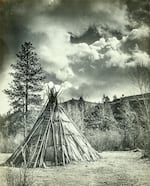
Layered, reed mats were a common — and effective — material for teepee exteriors, such as this teepee on the Umatilla reservation.
Oregon Historical Society, #bb015202

Three men stand in full regalia on the banks of the Columbia River in what was likely a staged scene by the photographer.
Oregon Historical Society, #bb011611
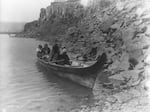
Several Wishram Indians travel along the Columbia River in a raised-prow, Chinook-style canoe in this undated photo.
Library of Congress, #3a47171u

A photo of President Warren G. Harding hangs outside a teepee on the Warm Springs reservation in the 1920s.
Oregon Historical Society, #bb015200
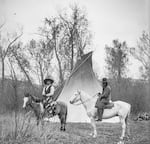
Pictured here, two men on horseback on the Umatilla Reservation in an undated photo.
Oregon Historical Society, #bb015161
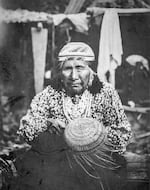
Mary Bradford, a basketmaker and member of the Rogue River Tribe, is pictured in this 1902 photo.
Oregon Historical Society, #bb012666
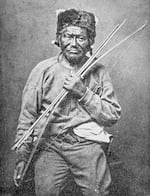
A Piute chief poses with a bow and arrows in this 1875 photo.
Oregon Historical Society, #bb012666

This 1923 image is titled "Klamath in costume," though "costume" is probably a poor choice of words, since it may suggest a "pretend" outfit and not one's actual clothes. Many Native Americans prefer the term "regalia" for official clothing worn for special occasions.
Library of Congress, #cph 3c23299
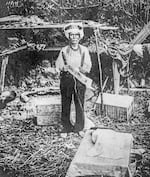
John Bradford, a Rogue River Indian, poses for a photo circa 1900.
Oregon Historical Society, #bb004226
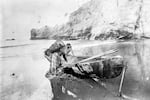
The Indians were removed from the Newport/Yaquina Bay area in the 1860s, opening the area up to white settlers. By 1900, when this photo was taken, seeing a Native American woman in a canoe near Newport was an unusual sight.
Oregon Historical Society, #bb003423
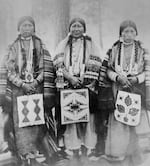
In this 1902 photo, three women stand for a picture on the Warm Springs Reservation in Wasco County, Oregon.
Library of Congress, #cph 3c19344
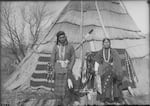
Red Elk and his sister, members of the Walla Walla tribe, pose in this undated photo. The Walla Walla tribe later became a member of the Confederated Tribes of the Umatilla Indian Reservation.
Confederated Tribes of the Umatilla Indian Reservation, #P2002.047.0073
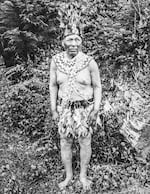
Hanna Coos Chief Deloose Jackson, who died in 1907, dreamed a song late in his life — a powerful occurrence in Coos culture. "We will never fall down," the lyrics of the song said.
Oregon Historical Society, #bb015178